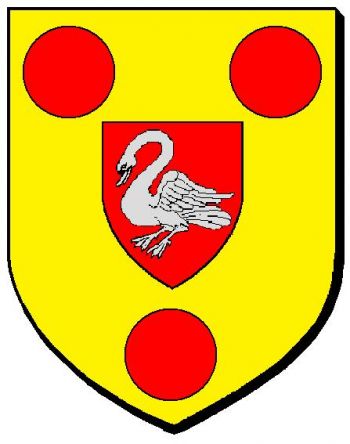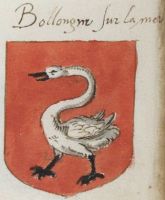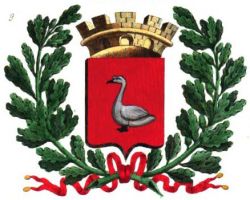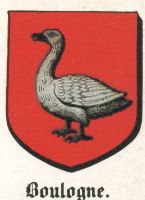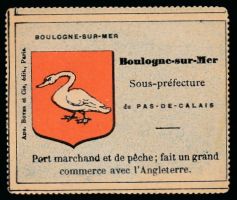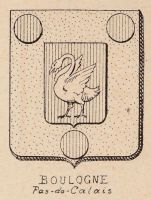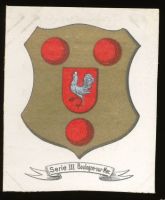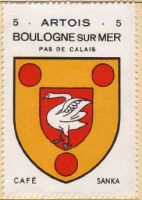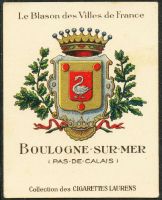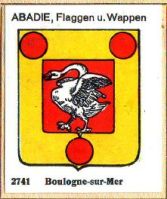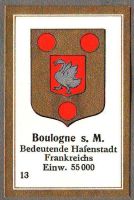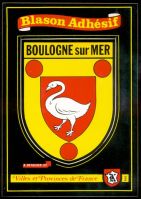Boulogne-sur-Mer
|
Country : France Département : Pas-de-Calais |
| French | D'or à trois tourteaux de gueules, à l'écusson de gueules en abîme chargé d'un cygne d'argent. |
| English | blazon wanted |
Origin/meaning
The origin or meaning of the swan is not known. The swan appears already on the city seals dating from 1286 and has been the symbol of the city ever since. The swan may have a much older origin though, as coins struck by the Morini, a Gallic tribe who lived in the area of what is now Pas-de-Calais during Roman times, showed already a duck or swan head. The swan was also a common bird in the marshes around the city in medieval times.
There is a legend regarding the swan, but this dates from a much later date; this tale describes that once upon a time there was a lady lady named Beatrix, whose castle where she lived on the banks of a river was under siege. A noble knight appeared in a boat drawn by a swan, rescued and married her. The legend is part of the (legendary) history of the counts of Boulogne.
Only in the late 17th century different arms appear for the town in the Armorial of Hozier:
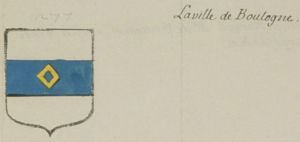 The arms in Hozier (1696) |
The origin or meaning of these arms is not known.
In the 1820s the city received new arms from King Charles X, where the arms with the swan are placed on a shield with the arms of the County of Boulogne. These arms are also known since the 13th century and the meaning is not known. The county ceased to exist in 1501 and comprised an area much larger as the current city.
Although the arms were granted in the early 19th century, the city arms were displayed during the whole 19th century largely as the swan only, see images below.
The arms in a 16th century manuscript
The arms aroud 1890
The arms in a German album +/- 1910
The arms in the Café Sanka album +/- 1932
The arms on a tobacco card by Laurens
The arms in the Abadie albums
The arms in a 1930s album
Literature: Bréemersch et al., 1996; info from the council
